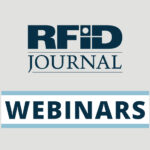How can we recycle radio frequency identification tags? Are they covered by DEEE/WEEE regulations?
—Name withheld
———
Déchets d’équipements électriques et électroniques (DEEE), or waste electrical and electronic equipment (WEEE), is a category of waste defined by European legislation as “equipment that is dependent on electric currents or electromagnetic fields, as well as equipment for the generation, transfer and measurement of such currents and fields, designed for use with a voltage rating not exceeding 1000 volts for alternating current (AC) and 1500 volts direct current (DC).”
DEEE or WEEE regulations are closely related to Restriction of Hazardous Substances (ROHS) regulations, which aim to keep landfills free of items containing lead, mercury, cadmium, hexavalent chromium, polybrominated biphenyls and polybrominated diphenyl ether, some of which are used in electronic equipment. Both sets of regulations aim to make companies that produce equipment responsible for recovering and recycling it. The goal is to minimize the amount of toxic and hazardous materials entering waste sites.
RFID reader and tag companies have been manufacturing interrogators that comply with ROHS regulations, and they submit these readers for testing to ensure they comply with laws in the European Union. I do not believe tags are an issue, and they need not be recycled or kept out of landfills (except for tags with metallic ink antennas, which do need to be kept out).
As for how to recycle tags, there is no easy way other than to remove them from each carton before it is thrown away, then melt down the metal antenna if one is used. I am not aware of any company currently doing this, but if RFID Journal‘s readers know of any, I would be interested in learning how they do so.
—Mark Roberti, Editor, RFID Journal







